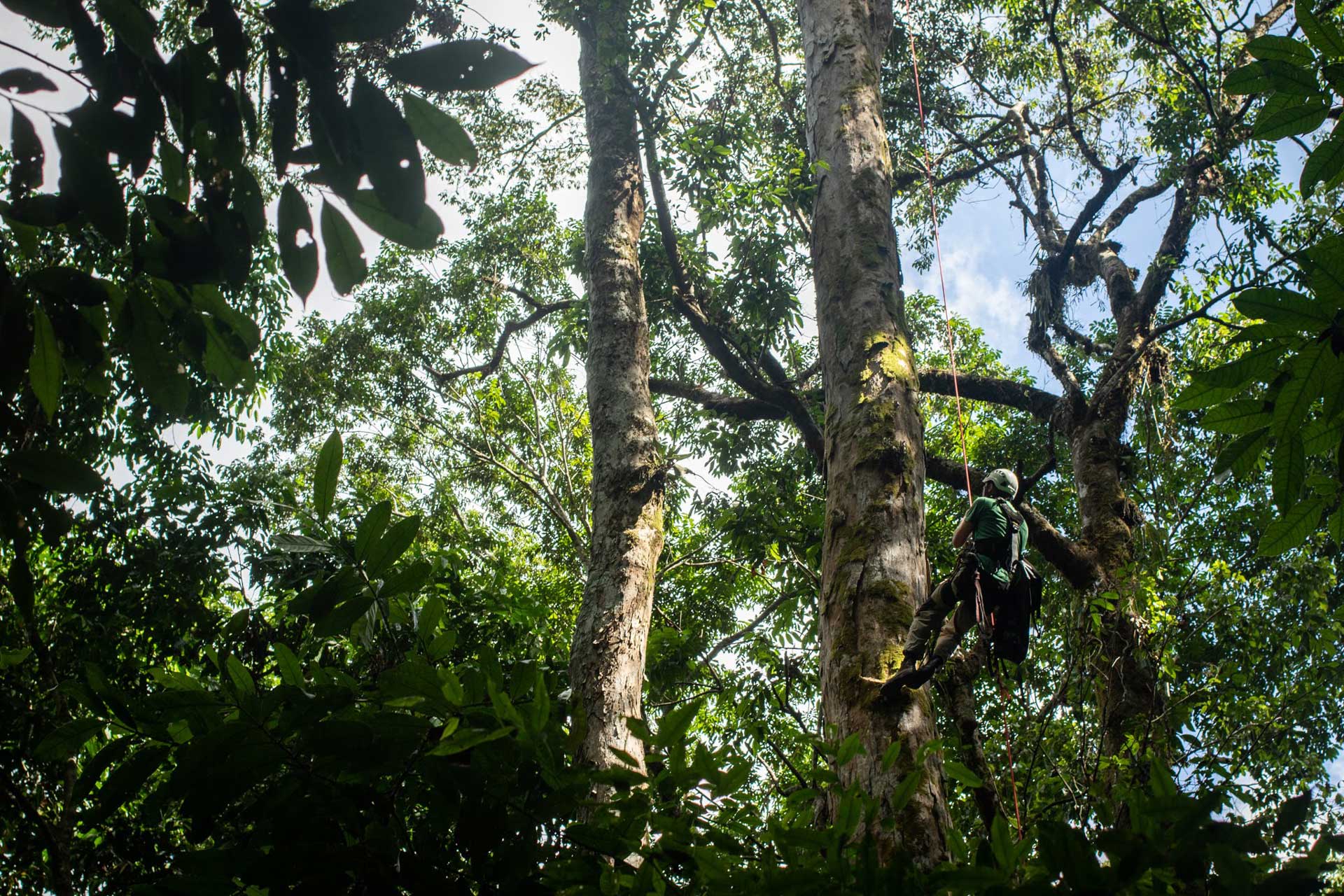
Socratea exorrhiza
Socratea exorrhiza
Chonta, Maquenque, Palmito amargo
Audio
English Audio
Audio en Español
Plant Story
This palm grows widely throughout humid tropical forests and can be recognized from a distance due to its wading roots which grow tall, light brown, and covered by thorns. Due to the size of the roots, it is sometimes confused with its sister, Iriartea deltoidea, but the latter has dark roots without thorns. This palm grows up to 25 meters and is extremely important for its ecosystem. Its blooms attract a large number of insects and its fruits are consumed by bats, arboreal mammals, and birds. Its wood is quite resistant and is used in construction. It grows in mature forests and is known from Nicaragua to Peru, Venezuela and Suriname; in Costa Rica it is widely distributed across both the Atlantic and Pacific slopes.
Historia de la planta
Esta palma es sumamente representativa del bosque tropical húmedo, se reconoce desde la distancia por sus raíces zancudas, generalmente altas, de color pardo claro y cubiertas por espinas; por el tamaño de las raíces a veces es confundida con su hermana la Iriartea deltoidea, pero esta última tiene raíces oscuras y sin espinas. Esta palma es llega a medir hasta 25 metros de alto y es sumamente importante para su ecosistema, las floraciones atraen a gran cantidad de insectos y los frutos son consumidos por murciélagos, mamíferos arbóreos y aves. Su tronco además es resistente y ha sido utilizada en construcción. Crece en bosques maduros, se conoce desde Nicaragua hasta Perú, Venezuela y Surinam, en Costa Rica se conoce ampliamente en ambas vertientes.
Plant details
Plant Information
Botanic Name:
Socratea exorrhiza
Common name(s):
Palmito amargo, Chonta, Maquenque, Palmito amargo
Family
Arecaceae
Phenology
Flowering Months:
October
Fruiting Months:
March, July, September, November
Conservation
IUCN category:
Not evaluated / No evaluado (NE)
CITES:
Not protected / Sin protección
Interesting Links
Plant Locations
Palmito amargo
Plant details
Audio
English Audio
Audio en Español
Story / Historia
Plant Story
This palm grows widely throughout humid tropical forests and can be recognized from a distance due to its wading roots which grow tall, light brown, and covered by thorns. Due to the size of the roots, it is sometimes confused with its sister, Iriartea deltoidea, but the latter has dark roots without thorns. This palm grows up to 25 meters and is extremely important for its ecosystem. Its blooms attract a large number of insects and its fruits are consumed by bats, arboreal mammals, and birds. Its wood is quite resistant and is used in construction. It grows in mature forests and is known from Nicaragua to Peru, Venezuela and Suriname; in Costa Rica it is widely distributed across both the Atlantic and Pacific slopes.
Historia de la planta
Esta palma es sumamente representativa del bosque tropical húmedo, se reconoce desde la distancia por sus raíces zancudas, generalmente altas, de color pardo claro y cubiertas por espinas; por el tamaño de las raíces a veces es confundida con su hermana la Iriartea deltoidea, pero esta última tiene raíces oscuras y sin espinas. Esta palma es llega a medir hasta 25 metros de alto y es sumamente importante para su ecosistema, las floraciones atraen a gran cantidad de insectos y los frutos son consumidos por murciélagos, mamíferos arbóreos y aves. Su tronco además es resistente y ha sido utilizada en construcción. Crece en bosques maduros, se conoce desde Nicaragua hasta Perú, Venezuela y Surinam, en Costa Rica se conoce ampliamente en ambas vertientes.
Plant Information
Botanic Name
Socratea exorrhiza
Common name(s)
Chonta, Maquenque, Palmito amargo
Family
Arecaceae
Phenology
Flowering Months
October
Fruiting Monts
March, July, September, November
Conservation
IUCN category
Not evaluated / No evaluado (NE)
CITES
Not protected / Sin protección
Interesting Links
Plant Locations
Post A Comment
You must be logged in to post a comment.









No Comments